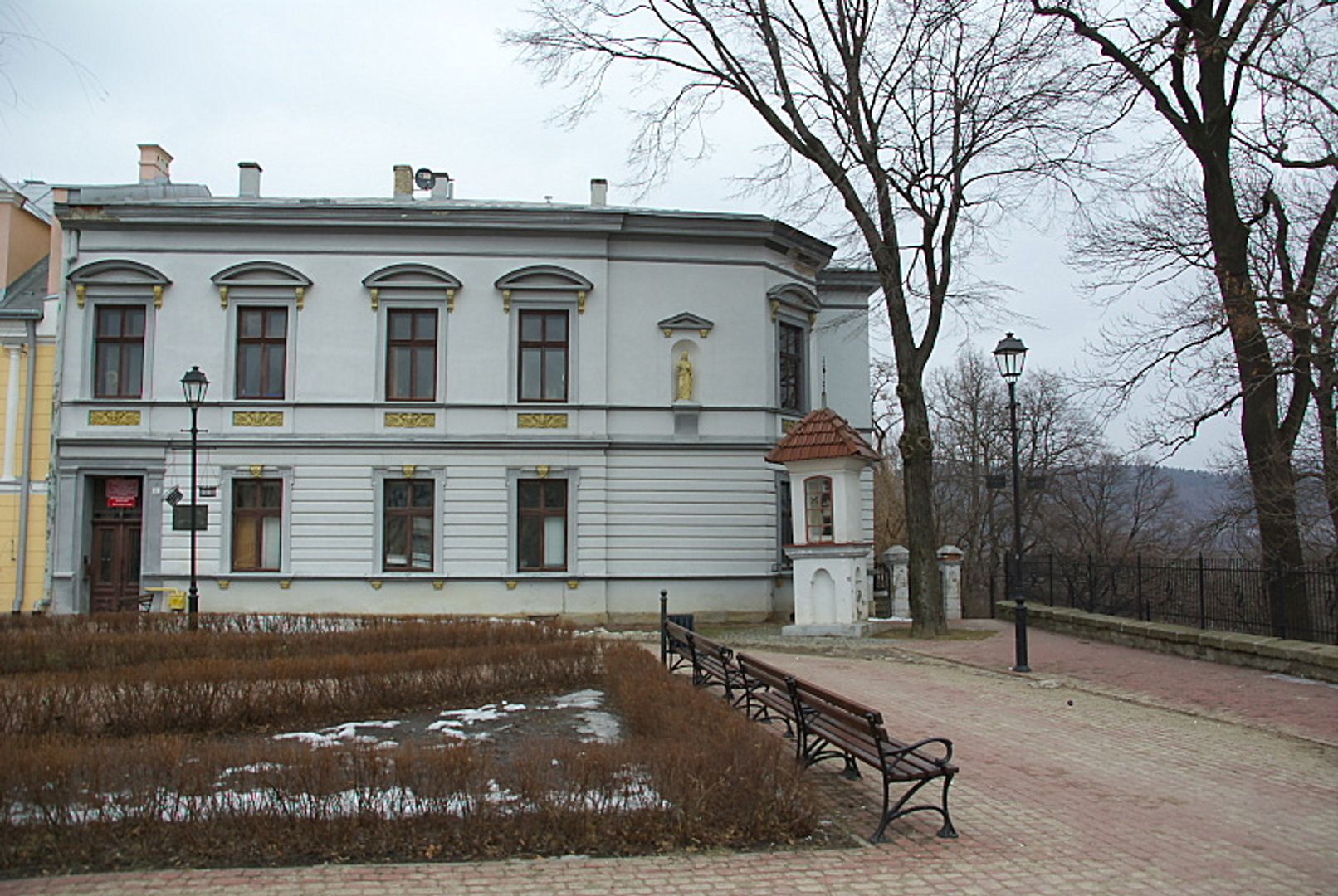The Zaleski Villa in Sanok
6.6

Overview
The Zaleski Family Villa, known as "Sokole Gniazdo" (Falcon's Nest), is located at St. John's Square 1 in Sanok and was designed by architects Władysław Beksiński and Wilhelm Szomek between 1896 and 1910. The building draws architectural inspiration from Venetian palaces, distinguished by its two-story wooden loggia overlooking the San River and the Słonne Mountains, while its façade is adorned with a statue of Christ and intricate ornaments. Originally numbered 4, the villa is now listed in the municipal register of historical monuments of Sanok.
The history of the villa is closely tied to the Zaleski family, particularly Dr. Karol Zaleski, who settled in Sanok at the turn of the 19th and 20th centuries. Karol Zaleski was a physician, social activist, and promoter of a healthy lifestyle. His descendants also contributed to the development of the town, engaging in various patriotic and educational activities. During World War II, the villa hosted secret lessons conducted by Zaleski’s daughter, Jadwiga, and housed the office of the German school superintendent. The Vetulani family, including professors, also resided in the villa, enriching Sanok’s cultural life.
Today, the villa still features an epitaph commemorating Karol Zaleski and a plaque honoring the secret teaching efforts. In popular culture, the villa appears in Bartłomiej Rychter’s novel *Złoty Wilk* (The Golden Wolf), which features both Dr. Zaleski and mayors of Sanok. Adjacent to the villa stands the historic Chapel of St. John of Nepomuk, founded in 1810.
The Zaleski Villa remains a vital part of Sanok’s heritage, intertwining family history with architecture, culture, and local traditions.
Location
2025 Wizytor | All Rights Reserved